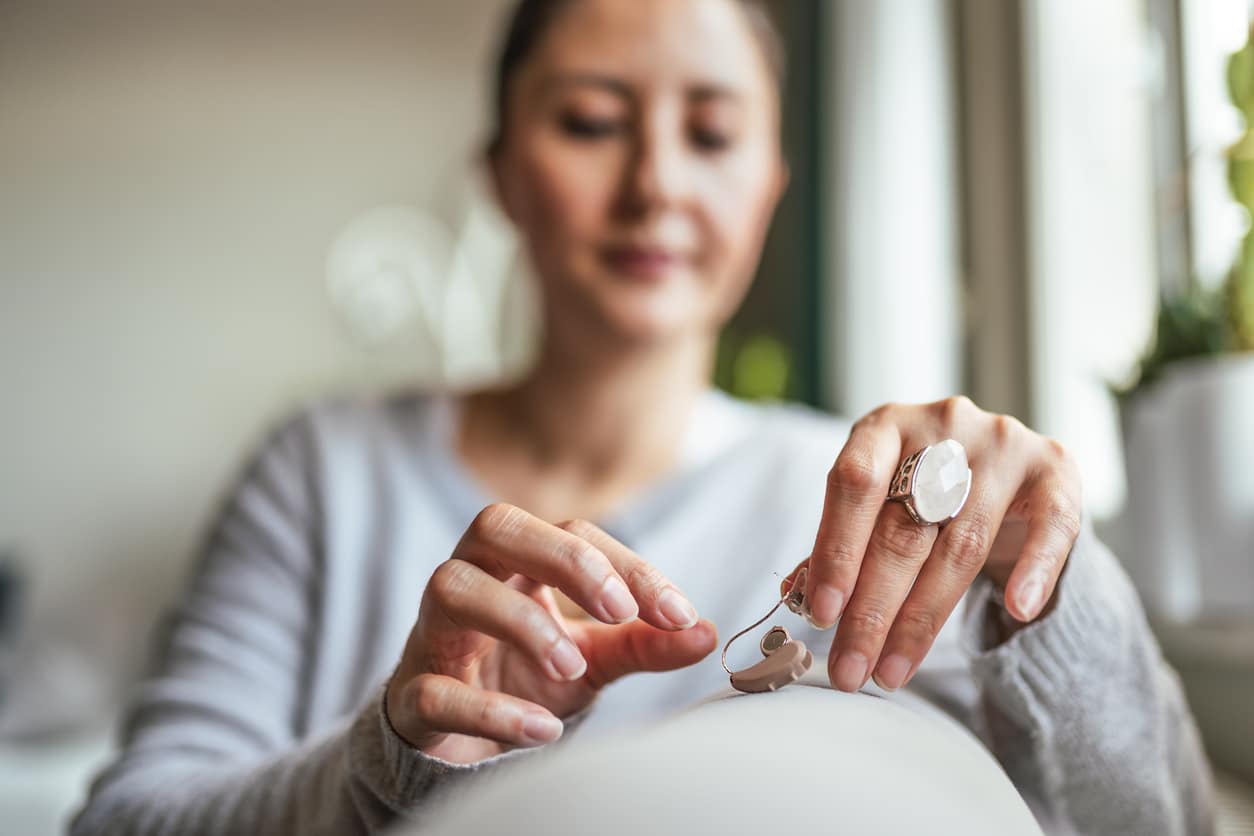Hearing aids have made significant strides in technology and convenience, especially in their power options. With 28.8 million Americans who could benefit from hearing aids, understanding the differences between devices with rechargeable batteries and those with replaceable batteries will help you make the most effective decision for your personal needs. Here’s a comprehensive guide to help you make an informed decision about charging your hearing aids.
Rechargeable Batteries

Rechargeable batteries are built into the hearing aids and can be recharged using a charging station or a USB cable. The primary advantages of rechargeable batteries include:
- Convenience: Rechargeable batteries eliminate the need for regular battery replacements. Simply place your hearing aids in the charging station overnight, and they’ll be ready to use the next day.
- Environmental friendliness: Reduces the frequency of battery replacements, benefiting those who are environmentally conscious.
Tips for Using Rechargeable Batteries:
- Nightly charging: Make it a habit to charge your hearing aids every night. Most modern rechargeable hearing aids provide a full day of use after a single charge.
- Prevent overcharging: While many chargers are designed to prevent overcharging, it’s good practice to unplug the charger once the hearing aids are fully charged.
- Storage: If you’re not using your hearing aids for an extended period, store them in a cool, dry place and ensure they are partially charged to maintain battery health.
- Battery replacement: Rechargeable batteries will eventually wear out and need to be replaced, typically after a few years. If you notice a decline in battery life, schedule an appointment with your hearing specialist to have them evaluated.
Replaceable Batteries
Replaceable batteries are single-use and need to be replaced regularly. They come in standardized sizes, and different hearing aids may require different types. The main advantages of replaceable batteries include:
- Immediate usability: They can be quickly swapped out, ensuring your hearing aids are always operational without waiting for a charge.
- Availability: They’re readily available in pharmacies, supermarkets and online, making them easy to purchase when needed.
Tips for Using Replaceable Batteries:
- Proper storage: Store spare batteries in a cool, dry place to avoid extreme temperatures that can shorten their lifespan.
- Monitor usage: Replaceable batteries typically last 3–22 days, depending on usage factors. Keep track of your usage patterns to ensure you always have spares on hand.
- Disposal: Used batteries must be disposed of properly to minimize environmental harm. Participate in recycling programs specifically designed for battery disposal.
Making the Right Choice
Choosing between rechargeable and replaceable batteries for your hearing aids depends on your lifestyle, convenience preferences and environmental considerations.
To learn more about the right hearing aid options for your lifestyle, contact Rancho Santa Fe Audiology to schedule a consultation today. Our team can conduct a hearing evaluation and ensure you’re equipped to stay connected.
